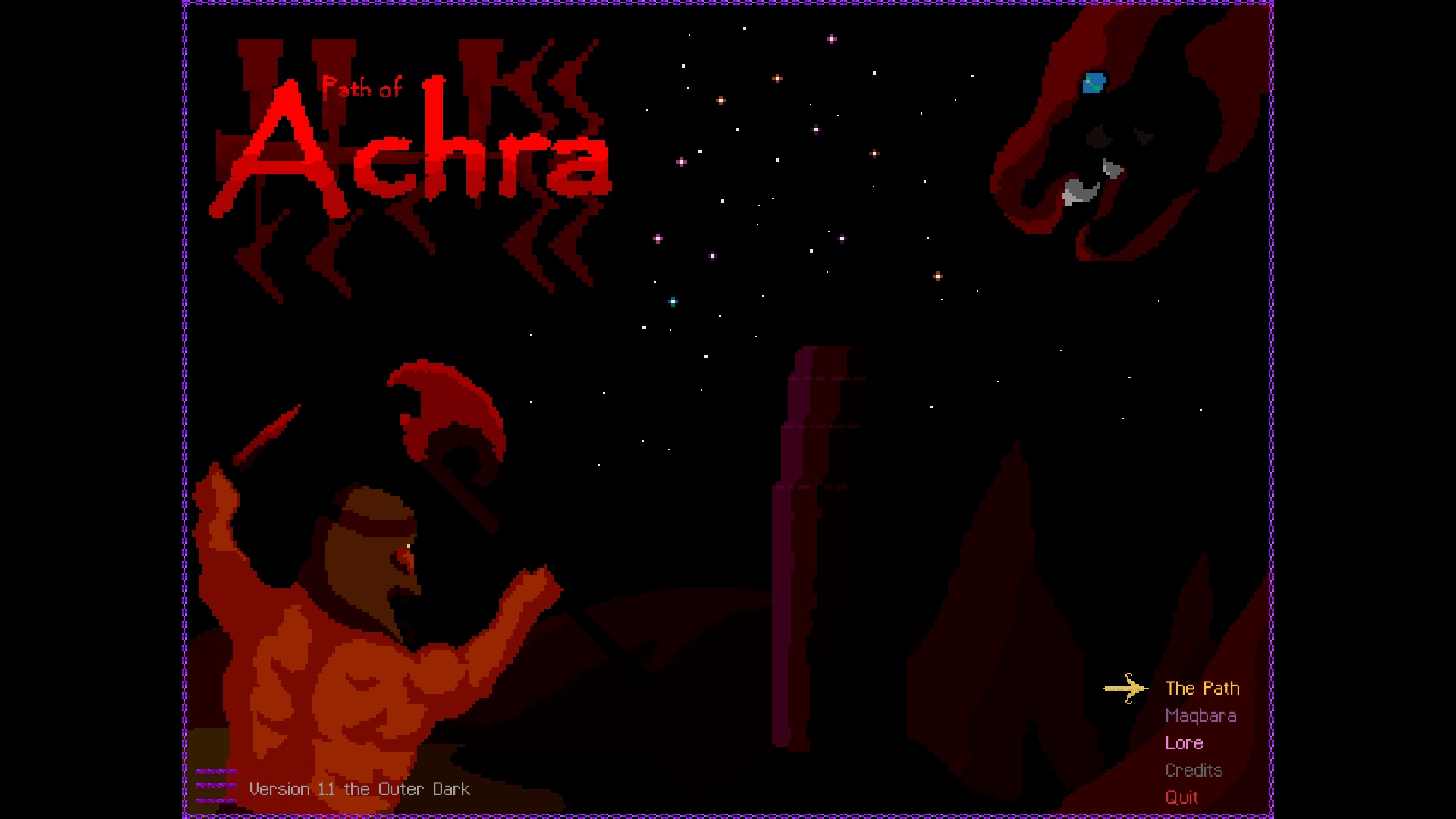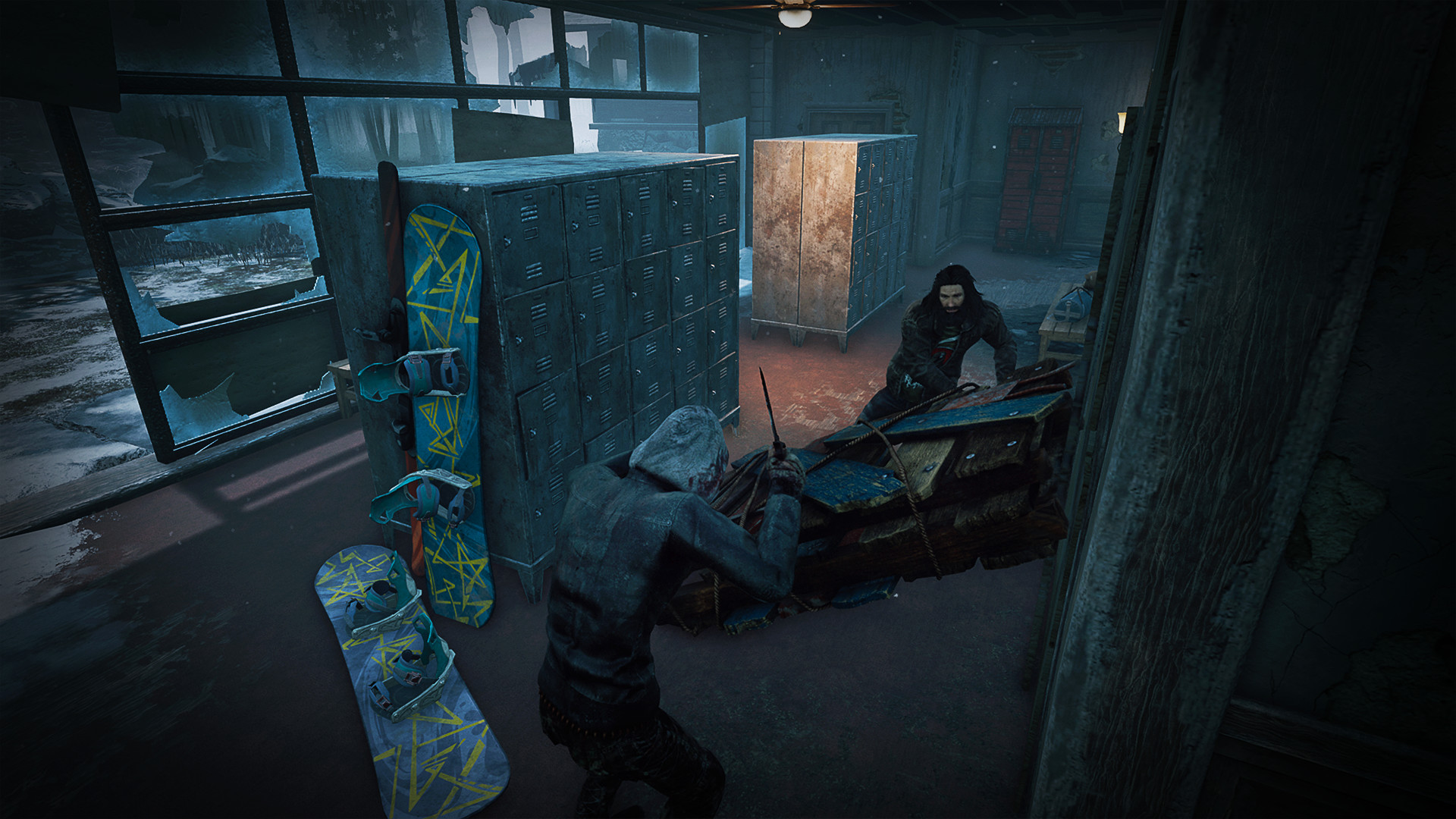Mad Dog II: The Lost Gold is a western themed first-person lightgun shooter available for download from the PlayStation Store for the PS3. American Laser Games was originally founded by Robert Grebe in the late 1980s under the name Institute for Combat Arms and Tactics (ICAT) with a system built for the purpose of training police officers which was later converted into arcade game technology. Mad Dog II: The Lost Gold was released in 1992 and was the fourth game developed by American Laser Games which was the one of many lightgun games to come from American Laser Games between 1990 and 1994 before changing their approach to specifically develop games for girls under the name of Her Interactive in 1995 which ultimately meant their fundamental loss of identity from what they had made their name from developing and while Her Interactive continued developing games; American Laser Games closed its doors. Digital Leisure purchased the development and publishing rights to American Laser Games’ entire back catalogue in 2000, followed by proceeding to remaster their games that had once released in arcades as well as on 3DO, CD-i, SEGA CD and DOS computers with the remastered releases appearing on PS3, Wii and more besides. Can Digital Leisure’s remaster of Mad Dog II: The Lost Gold improve upon the western themed first-person lightgun arcade classic?

The story is set in the American Wild West and is told from the perspective of a silent lead character referred to only as stranger as a dangerous outlaw named Mad Dog McCree continues his rampage he began orchestrating in the prequel with a gang of many wanted fugitives, although no-one else has been able to stop Mad Dog McCree and his gang; the gun slinging stranger persists in doing so. The stranger also hears of a vast treasure of gold which is said to be in the possession of Mad Dog McCree; therefore the stranger no longer just wants to take down Mad Dog McCree, but to also take his gold from him in the process.
There are some important gameplay mechanics such as scoring points for shooting enemies without missing or reloading with the more consecutive shots hitting leading to a higher score, although to earn a maximum score would most certainly require players to collect the bonus objects and play on a higher difficulty level. Bonuses are earned by shooting cow skulls and spittoons that are positioned throughout the town which provides extra bullets to shoot at enemies.
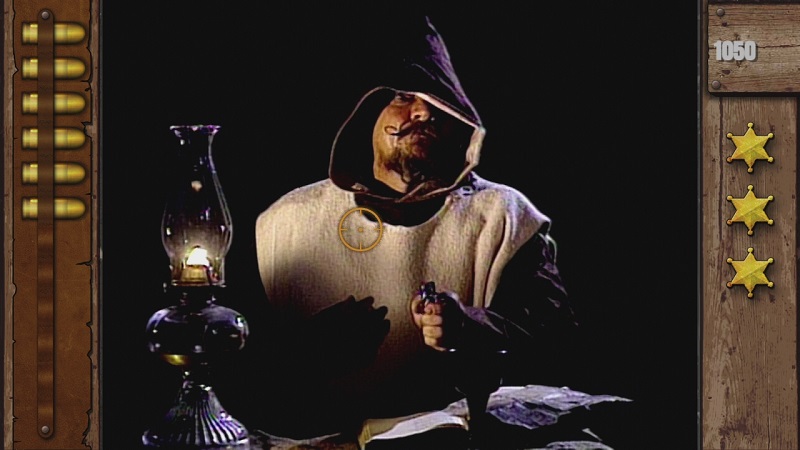
Intense showdowns are effectively duels with enemies from Mad Dog’s men that are authentic to the Wild West as they are one-on-one encounters in which the player and the enemy A.I. must holster their gun, while waiting with a hand close to the gun to draw at the appropriate moment, although drawing too early will lose the showdown and drawing too late will most probably result in taking a bullet.
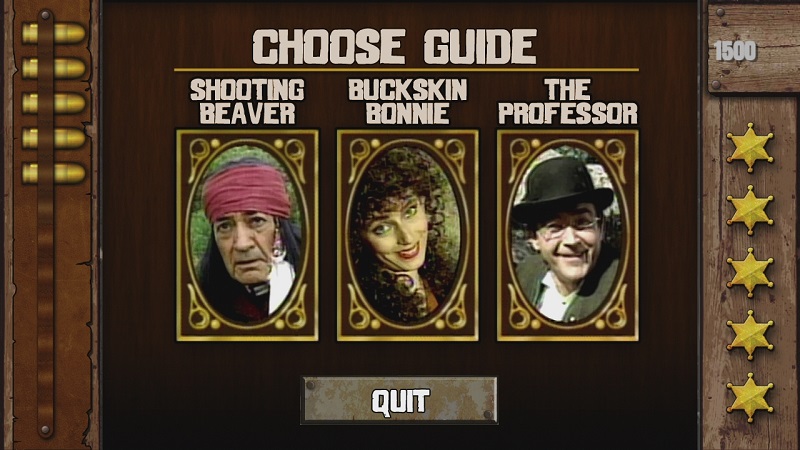
Character design is essentially a re-enactment of the Wild West period in which the characters are dressed appropriately for the time period with the majority of enemies standing up but some enemies are riding horseback, while weaponry is limited to pistols and a hand cranked rapid fire gatling gun on a stand which is also correct for the time period. You must decide who to trust to lead you as your guide from three very different characters including a Native American called Shooting Beaver, a male Professor or a woman called Buckskin Bonnie.
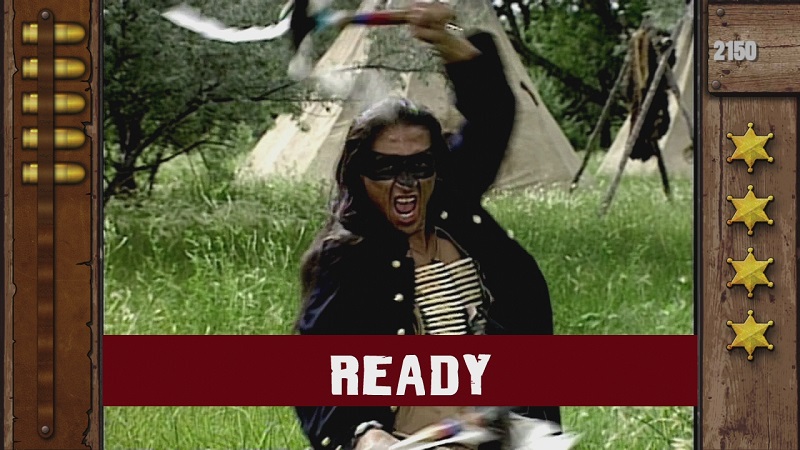
Environment design ties in with the character design yet has substantially evolved from that of its prequel by not focusing as much on indoor environments; instead placing emphasis on outdoor areas including the exterior of a boarding house, a lake surrounded by foliage, fields, a campsite, rocky terrain, a train carriage and more besides. Each guide will lead you through a different path for the majority of the game such as an indoor bar sequence if you choose the professor to be your guide resulting in three varying sets of environments.
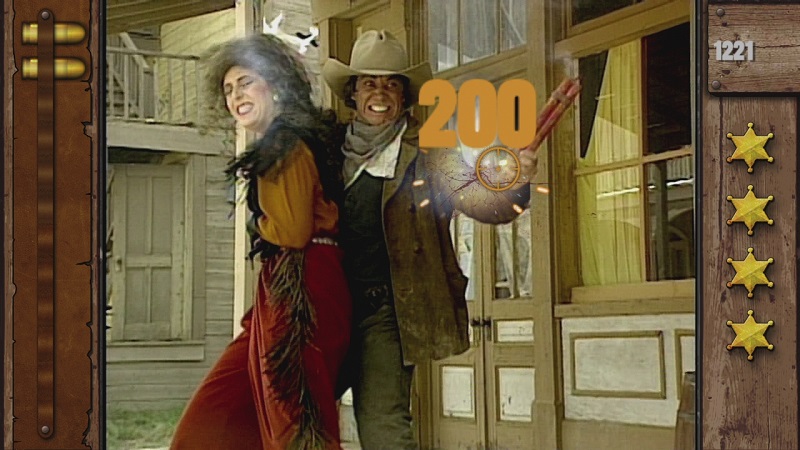
Mad Dog II: The Lost Gold much in the same way as Mad Dog McCree is a lightgun game perfect for PlayStation Move with a control scheme consisting of utilising the gyroscopic motion sensing functionality to aim at enemies by positioning the on-screen crosshair over an enemy and pressing the trigger (T) button or move button to shoot, while showdowns require players to point their Move controller down towards the floor as though it was in a holster with it only being drawn at the last second, alongside shooting off screen or shaking the PlayStation Move up and down to reload ammo. Calibration of the PlayStation Move controller is rather efficient and feels just like playing a lightgun game in the arcades with accurate representation of movement from the gyroscopic motion sensing functionality, although pressing select will allow you to re-calibrate the aiming if it is not initially to your liking, while vibration offers added immersion when shooting the pistol at an enemy, although there is no vibration when the playable character is shot by an enemy.

Graphically, Mad Dog II: The Lost Gold utilises the same approach as Mad Dog McCree in regards to their respective PS3 releases as it consists of the same style of live action film of actors and actresses featured in the full motion video (FMV) from the original version of the game which has been remastered in 720p HD. Therefore, the visuals are better in comparison to the original release with the appropriate effect of entering slow motion when the final enemy of an area or an enemy situated on a balcony is defeated is actually preserved as it was in the original release, while the crosshair and heads-up display have been noticeably improved.
Mad Dog II: The Lost Gold’s presentation has received an overhaul since the original release with a great user interface across various menus such as the main menu, settings menu, online leaderboards, extras menus and gameplay menus with support for navigation via the gyroscopic motion sensing functionality and the trigger or move buttons of the PlayStation Move controller. Menu backgrounds consist of a small camp fire nearby canyons in the middle of the desert as the sun sets and night falls.
There are naturally voice-overs from the entire cast of actors and actresses which provide a B-movie style delivery throughout the variety of scenes in the story and the wisdom of a mortician after every occasion the playable character suffers a death or after you accidentally shoot a civilian. Sound effects include gunfire, reloading, walking, enemies shouting and falling to the ground after they have been shot, enemies laughing at you after they have shot your character and general ambience, alongside music authentic to the period of the Wild West with the audio being maintained to a decent standard.
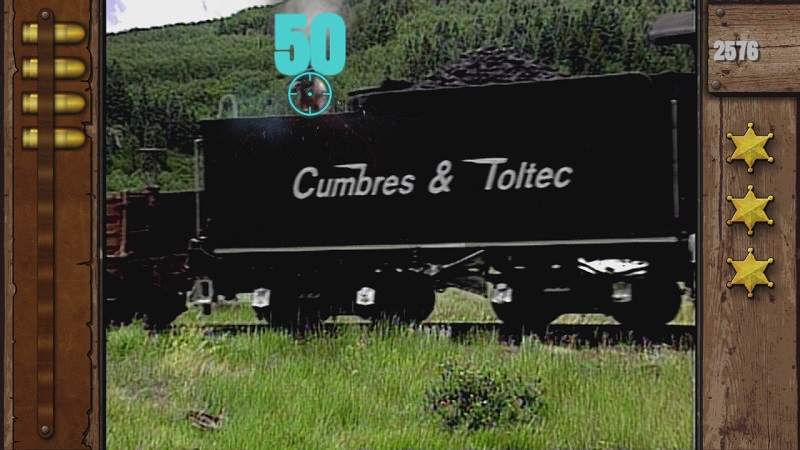
The trophy list includes 9 trophies with 5 bronze trophies, 2 silver trophies and 2 gold trophies. The easiest trophy is the Still Got It bronze trophy for hitting the three targets including dynamite, a cow skull and a sign, although it is still a missable trophy given the fact that you are positioned on a moving stagecoach but you can use as many bullets as you want to in order to maximise your chances of hitting all three targets. The hardest trophy has to be the Bang! Bang! gold trophy for shooting 12 enemies in a row without missing or reloading during single player. It is also worth noting that the Saddle Up, Partner silver trophy is for beating Mad Dog in multiplayer, therefore requiring a second PlayStation Move controller, although you do not require a second player as the second PlayStation Move controller can remain idle. It is estimated that depending upon skill, two PlayStation Move controllers and a good trophy guide to provide some helpful tips that it would take between 1 to 2 hours to 100% the trophy list.
There are 3 difficulty levels including deputy, sheriff and marshal with the major differences between each difficulty level including a reduction in the amount of time players have to respond after having seen an enemy before they shoot. However, regardless of the chosen difficulty level; players will need to return to the previous checkpoint if the character is shot even just once and reaction times have to be fast, especially as the order in which enemies appear are mostly random from one playthrough to another, although the positive is that infinite continues are afforded to players.
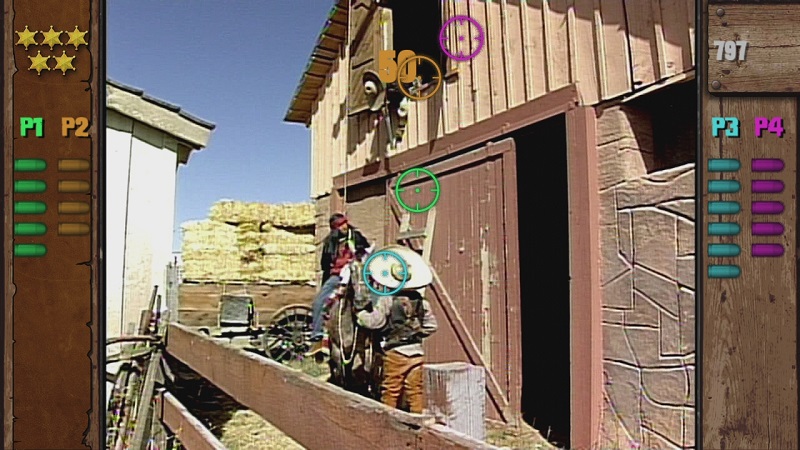
Local multiplayer supports 2 to 4 players in a co-operative mode with a crosshair that is clearly assigned to each player by glowing in the same colour as the orb on top of the respective PlayStation Move controller and a set of the standard 6 bullets for each player, although the lives are still limited to 5 which will reduce regardless of which player was closest to shooting the enemy. Local co-operative multiplayer is entertaining, although it would have been even better to have a score based competitive multiplayer mode in which each player was attempting to achieve their own personal high score that was higher than the rest of the surrounding players by defeating enemies before the other players; all whilst simultaneously retaining a focus on co-operative gameplay to gain the best total score. There is no online multiplayer which could have reflected the approach of the local co-operative multiplayer and the further possible improvement of a competitive multiplayer mode.
Online leaderboards are focused on worldwide rankings, local rankings and friends rankings for the story during single player with each leaderboard containing each player’s rank; name (PSN ID); and the score accumulated with the positioning of each player based upon the score they have successfully achieved and your personal positioning and best score on the online leaderboards. It would have been even better to have additional online leaderboards such as co-operative leaderboards for 2, 3 and 4 players for those who have played through the story co-operatively as well as single player and co-operative leaderboards for such details as the total amount of enemies defeated throughout multiple playthroughs and the lowest amount of shots received from enemies.

Mad Dog II: The Lost Gold’s replayability stems from multiple features such as local co-operative multiplayer for 2 to 4 players, competitive online leaderboards, 3 difficulty levels to experience the story or test your skill against the hardest A.I. the game has to offer, three guides that lead you through different routes and scenes and a random order of when enemies appear in certain areas such as the rocky terrain near the train carriage which provides a challenge on any difficulty level due to the unpredictability it brings to the experience which collectively makes up for the relatively short running time of the full motion video and keeps players returning long after a single playthrough.
Analysis
- Title: Mad Dog II: The Lost Gold
- Developer: American Laser Games/Digital Leisure
- Publisher: Digital Leisure
- System: PS3
- Format: PSN Download
- Cross-Buy: No
- Cross-Play: No
- Players: 1-4 (Local Co-operative Multiplayer)/Online Leaderboards
- Hard Drive Space Required: 1.4GB (Version 1.03)










